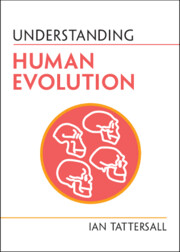Book contents
- >Understanding Human Evolution
- Series page
- Understanding Human Evolution
- Copyright page
- Reviews
- Dedication
- Frontispiece
- Contents
- Maps
- Foreword
- Preface
- Acknowledgments
- 1 Evolution
- 2 Technology: Dating, Diets, and Development
- 3 Discovery and Interpretation of the Human Fossil Record: The Early Days
- 4 Discovery and Interpretation of the Human Fossil Record: Later Developments
- 5 Early Bipeds
- 6 The Muddle in the Middle
- 7 Homo heidelbergensis and the Neanderthals
- 8 The Emergence and Spread of Homo sapiens
- Epilogue
- Summary of Common Misunderstandings
- References and Further Reading
- Figure Credits
- Index
7 - Homo heidelbergensis and the Neanderthals
Published online by Cambridge University Press: 21 July 2022
- >Understanding Human Evolution
- Series page
- Understanding Human Evolution
- Copyright page
- Reviews
- Dedication
- Frontispiece
- Contents
- Maps
- Foreword
- Preface
- Acknowledgments
- 1 Evolution
- 2 Technology: Dating, Diets, and Development
- 3 Discovery and Interpretation of the Human Fossil Record: The Early Days
- 4 Discovery and Interpretation of the Human Fossil Record: Later Developments
- 5 Early Bipeds
- 6 The Muddle in the Middle
- 7 Homo heidelbergensis and the Neanderthals
- 8 The Emergence and Spread of Homo sapiens
- Epilogue
- Summary of Common Misunderstandings
- References and Further Reading
- Figure Credits
- Index
Summary
The morphological medley of hominin crania known in Africa following the one-million-year mark indicates that the subfamily’s tendency to diversify continued unabated. It is frankly unclear exactly what was happening earlier in this period, but by about 600 kyr ago one hominin species had come to dominate the scene: Homo heidelbergensis. This was the world’s first-documented cosmopolitan hominid, with representatives from France, Italy, and Greece (Figure 7.1, left) in Europe; from South Africa, Zambia (Figure 7.1, center), and Ethiopia in Africa; and from China in Asia (Figure 7.1, right), apparently including the recently ballyhooed “Dragon Man” cranium from Harbin that was dubbed Homo longi. Dating of many of the known specimens is poor, but plausible dates as early as 600 kyr have been claimed for H. heidelbergensis in both Europe and Africa; and, the Dragon Man (>146 kyr) excepted, no proposed date for the species is more recent than about 200 kyr. Most of the fossils that represent H. heidelbergensis are cranial, and present us with a picture of a heavy-boned form with a modestly sized dentition and a reasonably large brain of between about 1,166 and 1,325 ml. Its face is massive, surmounted by very high brow ridges that show a characteristic lateral “twist.” Nothing like a complete skeleton of H. heidelbergensis is known, but the postcranial bones we do have are witness to a robust build, with a moderately wide pelvis and heavily built limbs of basically modern proportions. Allowing for flyaway hair and almost certainly some clothing in northern climes, on the landscape you would likely have had to approach to within a dozen yards of one of these hominids before clearly noticing that he or she looked rather different from you.
Keywords
- Type
- Chapter
- Information
- Understanding Human Evolution , pp. 108 - 128Publisher: Cambridge University PressPrint publication year: 2022



